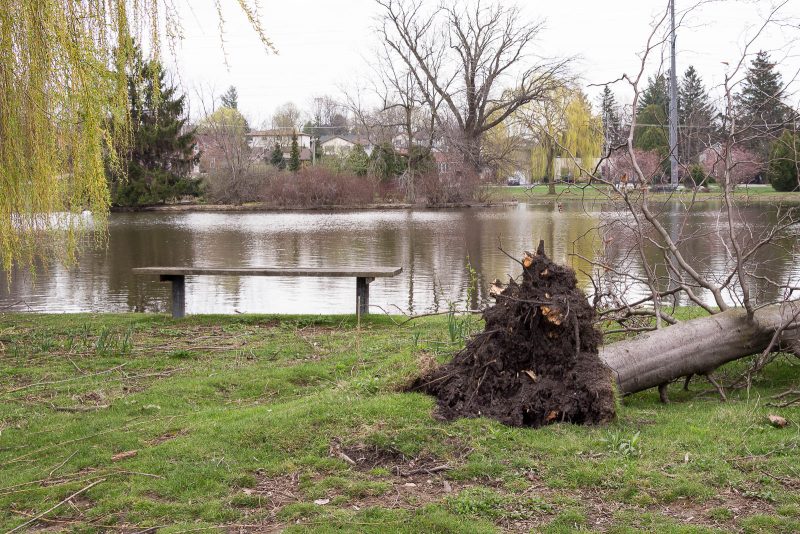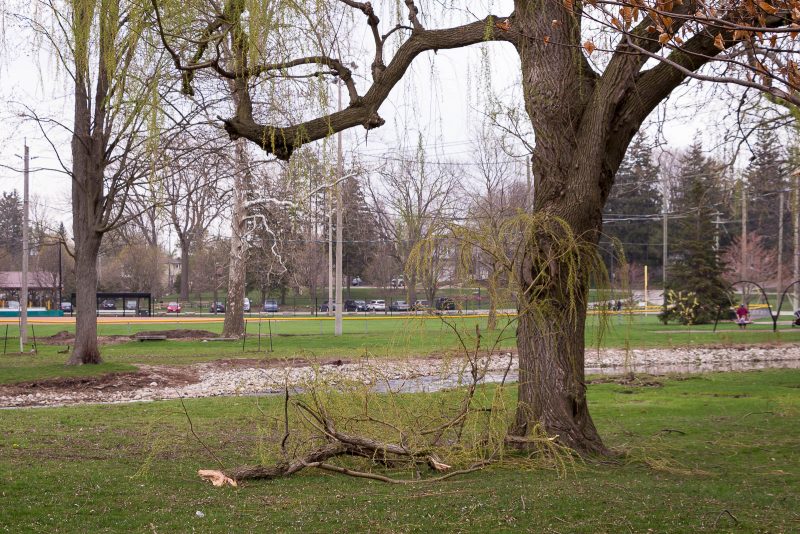I’ve been waiting to photograph this tree in sunlight, but the weather is not co-operating. This tree is glorious, but the blooms are already starting to drop so rather than wait for better light I took the photos today.
I’ve been waiting to photograph this tree in sunlight, but the weather is not co-operating. This tree is glorious, but the blooms are already starting to drop so rather than wait for better light I took the photos today.


©voyager, all rights reserved
We had a wind storm on Friday that caused a lot of damage across my region in Southwestern Ontario. There were wind gusts of up to 100 km/hr and some areas suffered power outages lasting several hours because of downed trees and hydro lines. There wasn’t any real damage in my neighbourhood, but today at the park Jack and I found a small uprooted tree and several large branches down. I’m worried that our little wooded trail in the country will also have suffered damage. There are quite a few trees there in precarious condition and it’s prone to storm damage. I plan to take Jack tomorrow to check it out.
I’m so excited. Today Jack and I found new leaves on the maples. They’ve come so quickly this year, almost overnight, that it’s a bit astonishing. It’s likely because our temps have gone from the zeros to the twenties this week and seem to be staying there. All those plants that were waiting for some warm are making up for lost time. My grass already needs cutting. What a strange year.

©voyager, all rights reserved
“Going to the Dogs” Workshop #2 brought together scholars from England, Scotland, and Poland to discuss the various and complex intersections of disability- and animal-studies research. Discussions centred on talks delivered by Rachael Gillibrand (Institute for Medieval Studies, University of Leeds), Dr Ryan Sweet (School of English, University of Leeds), Dr Andy Flack (Department of History, University of Bristol), Dr Neil Pemberton (Centre for the History of Science, Technology and Medicine, University of Manchester), and Dr Justyna Włodarczyk (Department of American Literature, University of Warsaw). The talks covered topics including the animal assistants of disabled people in the late-medieval West; nineteenth-century representations of animals with prostheses; connections between historical understandings of animals that live in darkness and vision-impaired people; the role of the caress in 1930s America human-guide-dog partnerships; and current controversies surrounding emotional-support animals in the US.
-Via Medievalists.
From Joseph: I’ve begun a series I call Fancy Bats. This one is the first in the series. It’s pen and ink on Bristol board.
I focus on bats because, well, bats are awesome. They’re such fascinating marvels of evolution, and they don’t get enough love in mainstream U.S. culture. Whether it’s the puppy-dog cuteness of large fruit bats or the otherworldly intricacy on the faces of echolocating microbats, I’m always drawn to the magnificent aesthetics of these creatures.
As for the style, it’s largely based on my idle doodling. When I’m bored and not focusing on any particular image or idea, I draw repeating patterns of curves and points, so this is an extension of my instinctual habits. Also, I’ve been intrigued with the stylized depictions of animals in ancient Mesopotamian and Persian sculpture, from bulls and lions to fantastic beasts like lamassus and manticores. It’s been a source of inspiration for years.
This is just the beginning, and I don’t know exactly which direction this series will go. I just know that this ties together several ideas that mean a lot to me, and I hope you all enjoy the results.
I’m with Joseph, I love bats and find them fascinating. Our local bats are Myotis lucifugus, and I love watching them. I also love Joseph’s beautiful drawing, be sure to click for full size!
